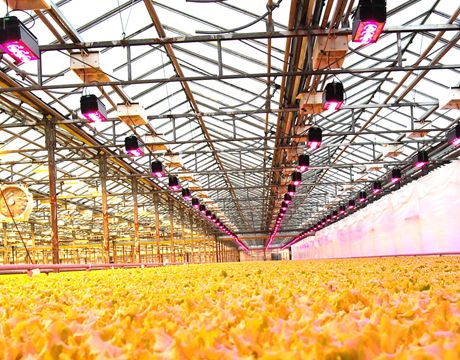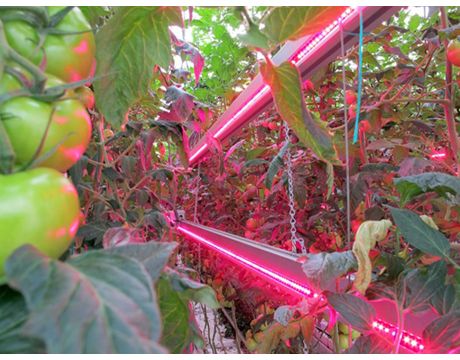Supplemental light for greenhouses. What should we check before purchasing lights for greenhouses?
04/2018
There are several answers. The first step is to contact a supplier of LED agricultural grow lights. Your request should contain the PPFD at the plant canopy height and the choice of spectrum most suitable for what you want to grow. I know that a lot of folks just don't have this knowledge yet as this is a newly developing field. So, if you or anyone on your team don't have this knowhow, you will at least need to be able to provide the information I will describe below. So, as for the answers to the question How do we know what we need?. Firstly, if you have a consulting agronomist, use him to help reach the information. If he doesn't currently know, hope you have chosen to work with someone who knows how to research and find those answers. If this doesn't bring you the data, look for answers in professional literature, academic institutions, research facilities, etc. If you still haven't found answers, cross your fingers and hope that your LED agricultural lighting supplier can help.If he also isn't the answer to your prayers, you will have no choice but to purchase lighting fixtures with as wide a spectrum as possible, for research purposes. These fixtures should have the option of dimming as many separate parts of the spectrum as possible, in order to start in finding the best option. These fixtures will cost several thousand dollars which seems like a big investment but will only be, in my opinion, a fraction of the total expense of lighting for a commercial facility. Obviously, this will depend on the size and type of facility as well as the chosen crop. On the other hand, if you made a mistake in your choice of fixture, this may affect the yield in your facility which will, in the long run, cost much more, or you bought the OVERKILL solution and paid 10 times more than it would cost to buy a research fixture that helps you answer the question "how do I know what I need?" The answers to light levels and spectrums are vitally important because a wrong answer here can cost hundreds of thousands of dollars or more in a commercial facility, or several thousand in a small home facility. Or, alternatively, you could invest a considerable sum of money in a lighting system which is at best mediocre and at worst ineffective. Now let's stop for a moment! As always, LED agricultural lighting is complicated. Because we are talking about supplementing lighting in greenhouses, there is some important data necessary for you in the choice of a correct economical option. We normally add LED lighting to greenhouses because we are trying to grow something that naturally wouldn't grow in our climate all year round successfully.The point is that we wish to add exactly what is necessary as each additional lighting fixture cost a lot both in purchase and energy. Greenhouse lighting is dynamic. Take into account that light planning for artificial lighting will be designed in order to provide the maximum PPFD level you requested. There are accessories that can be added to a fixture in order to dim it to a lower intensity when natural light is strong enough. This saves energy and extends product life span; however these accessories work to drop from 100% of the strength of the lighting system. They don't know how to get 110% from the system. |
 | Here are some questions which can help your chosen supplier offer the correct solution:
|
If you know how to provide these data points, great! If not, do what you can to supply them. It's worth a lot of money and energy.When the person offering you lighting solutions has this data he can calculate the PPFD the lighting system needs to produce on the darkest day you wish to be able to grow in. With a little acumen and proper control work, your consultant will be able to set up a lighting system which adds exactly the amount of light that is required, in the correct spectrum, at minimal cost.The last, short point is relevant to finding solutions for those growing in Israel. We live in a sunny country; therefore it could be that your solution is in photoperiodic lighting. The goal of this type of lighting is not to give the plant energy from light photons, but rather to fool the plant's light sensors into believing the day is longer than it is actually. This is relevant only for photoperiodic plants. A photoperiodic lighting system is usually much lower in intensity and cheaper than a photosynthetic system. So, if your plant receives enough energy, but the shorter days in winter cause the plant to flower, or not (according to the type), there is a cost effective solution that will help growing and production all year round. I wrote an entire article about the difference between photoperiodic lighting and photosynthetic lighting, if you're interested you can delve a little deeper here. I wish you successful growing and good light. |

